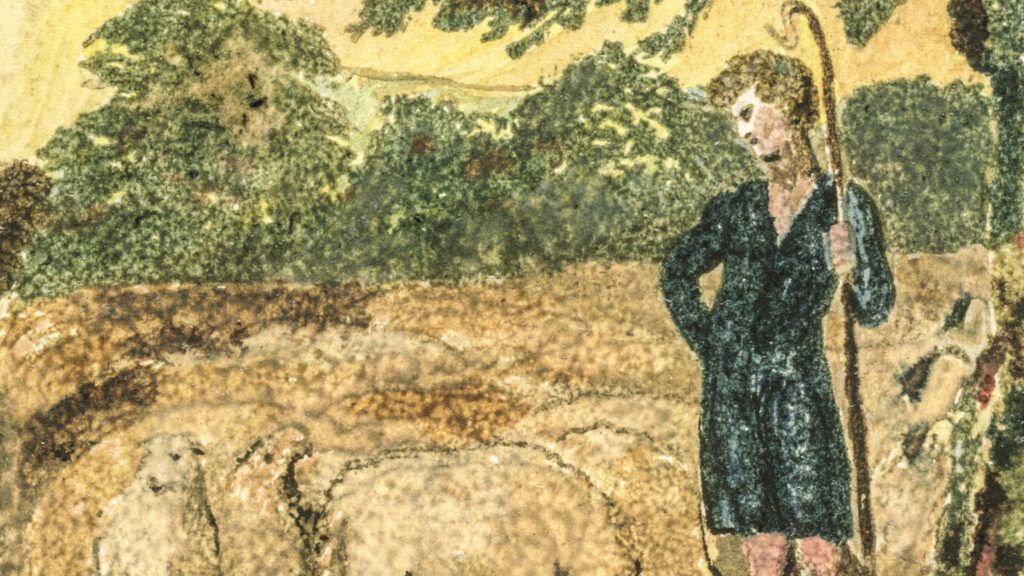I thought I knew about Saint Patrick. The guy who banished snakes from Ireland, then converted everyone to Christianity by noting that the three-leaf clover was a perfect symbol of the Trinity. He performed many miracles. Because of that, there’s a big parade down New York’s Fifth Avenue on March 17, and all the bars serve green beer, right?
Well, not quite.
The real Saint Patrick—or Patricius, to use his given name—proved far more interesting. I learned about him in my friend Tom Cahill’s bestselling book How the Irish Saved Civilization. Contrary to myth, Patrick did not rid Ireland of snakes—the Emerald Isle never had any—and though he might have used the three-leaf clover in a sermon, the greatest miracle he ever performed is what God made of his life.
READ MORE: St. Patrick’s Day Activities for Families
Patricius wasn’t even Irish by birth. He was born into a British Christian family sometime in the late fourth century (though it is hard to know when). It was in England that he learned his rudimentary Latin and, during the waning Roman Empire, lived in prosperity and security. Then as a teenager, he was kidnapped, whisked off to Ireland and sold as a slave to a chieftain there, who made him a sheepherder. He lived in the cold, unforgiving, damp climate with little more than the skin on his back.
Young Patricius turned to prayer to sustain himself, as he later recounted in his memoir, Confession. He forged a deep relationship with God while tending the flock. “In one day,” as he later wrote, “I would say as many as a hundred prayers and after dark nearly as many again, even while I remained in the woods or on the mountain. I would wake and pray before daybreak—through snow, frost, rain.”
For six years, Patrick persisted in his prayers and his work. Then one day, a mysterious voice spoke. “Your hungers are rewarded. You are going home.” Home—back to Britain. “Look, your ship is ready.”
Patrick was inland, nowhere near the sea. Where would he find a ship? Yet he trusted the words that he’d heard. He immediately set out by foot on a journey of some 200 miles, an escaped slave in unknown territory. It was a miracle he knew where to go and was not caught. He arrived at an inlet to find a ship—his ship?—full of sailors traveling to Gaul, a region in present-day Western Europe. They were transporting Irish hounds to sell there.
The captain eyed Patricius suspiciously. “You’re wasting your time asking to sail with us,” he said. What would Patrick do? There was no place to hide. It was only a matter of time before he’d be caught. All he could do was pray. Soon enough, the sailors called him back. “Come on board—we’ll take you on trust.”
Trust, faith, following God’s lead without knowing where it will take you and, most of all, a love for one’s fellow beings—all these qualities continue to make Saint Patrick resonate today, so many centuries later. In a time when Christianity was still defining itself, with monks retreating to the desert in self-denial, Patrick offered a different model for the faithful: goodness sustained by prayer and love.
When Patricius and the sailors landed in Gaul, they were surprised to find a desolate landscape—the result perhaps of the Germans wreaking havoc on the usually fertile terrain. His men starving and hopeless, the captain asked this Christian why he didn’t just call on his so-called God for help. Without hesitation, Patrick turned to the sailors and said, “From the bottom of your heart, turn trustingly to the Lord my God, for nothing is impossible to him.”
They did and, soon enough, spotted a herd of pigs coming in their direction—the most substantial food the hungry crew could hope for.
Patrick eventually returned to Britain and was reunited with his family. But once there, he realized he was not quite at home. He’d become a man without a country. He’d spent a lot of time with the people of Ireland and grown to love them—astounding considering his enslavement by them. One night, he had a vision. A man he knew from Ireland named Victoricus appeared to him, holding a stack of letters. He handed one to Patrick. Its heading read, in Latin, vox hiberionacum, or “the voice of the Irish.” Then Patrick heard the voice of the multitude, crying, “We beg you to come and walk among us once more.”
Patrick would heed the call—and return to Ireland. But first, he wanted to learn more about the faith that had sustained him in Ireland so that he could better help the people once arrived. Like someone today whose call for ministry leads to seminary, he headed to southern France, most likely to a monastery off the coast, where he underwent grueling studies and was eventually ordained a bishop. I wonder if he was tempted to stay there—there would certainly have been plenty of opportunities for him. But he’d been called to Ireland.
Patricius’s journey was the first example of a mission to people outside Greek, Christian or Roman civilizations. “In truth, even Paul, the great missionary apostle,” as Tom writes, “never himself ventured beyond the Greco-Roman Ecumene.”
Aware of the dangers, Patrick headed for Ireland. “Every day I am ready to be murdered, betrayed, enslaved—whatever may come my way. But I am not afraid of any of these things because of the promises of heaven,” he wrote. He stayed in Ireland for the next 30 years, baptizing, preaching, ordaining and teaching.
Notably, Saint Patrick was the first person in history to resolutely condemn slavery. When some of his new converts were stolen by British pirates and sold, he hurled invectives against the horrors of enslavement, a state he knew all too well. It would be more than a thousand years before anyone else spoke out so forcefully against it.
Patricius’s influence on Ireland was transformational. In time, the petty warring stopped and monasteries were established—places where Scriptures would be saved, preserved and copied. As the Roman Empire disintegrated and the Dark Ages descended, chaos disappeared from the Emerald Isle, a land changed by the work of one man.
Theories on who Saint Patrick really was abound. Some say there must have been two Patricks—it’s impossible to ascribe so much to one man. Never mind. What’s important is his legacy: lessons in the power of love, goodness, courage and indomitable faith.
READ MORE ABOUT ST. PATRICK’S DAY:





